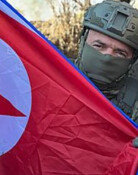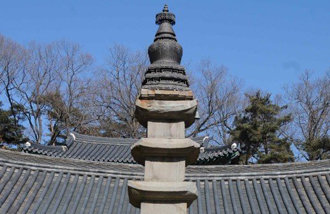Army High-tech Military Drills
High tech devices have become an integral part of the armys command structure. The military recently revealed the operational command centers of divisions and army corps conducting a corps-level field training exercise (FTX), for the first time, to Dong-A Ilbo. The FTX, the armys largest military exercise, involving over 50,000 soldiers, took place in Icheon, Yeoju, and Hoengseong, Gangwon Province. A Dong-A Ilbo reporter covered the story while staying at the operational command center of the 9th Army Division, which was participating in the drill.
The four-day drill was a virtual war between the 7th Corps and the 2nd Corps, which engaged in a fierce battle with no prearranged agreement except that Namhan River was the recognized military demarcation line.
The positions of our artillery units have been confirmed. Artillery regiment, strike the enemy forces immediately, the division commander ordered.
In response, the regiment commander relayed the order to fire to all units under his command. The offense began at 4 a.m. on Monday, but the special forces soldiers had already infiltrated the enemy territory and were sending the precise coordinates of the main enemy units using wireless communication devices and GPS.
The digital operational chart, which summarizes intelligence sources from unmanned surveillance aircrafts and special forces soldiers, was screened at the operation command center using a projector, promptly renewing information on the locations of the main enemy units and their combat capabilities.
Not only corps commanders, but also regiment commanders participated in video conferences to discuss strategies while viewing the same screen. The acquisition and sharing of intelligence through both wired and wireless networks has been made possible by the military communication network.
The Combined All Sources Intelligence Center of the Corps, which gathers and analyzes all the data collected from related units, delivered timely information on the strengths of our forces and the enemy forces to each unit.
Although no real shell was used, control officers, who play the roles of referees, calculated the accuracy and the damage of gunfire.
On Tuesday morning, the commanding post moved to Geumsa, Yeoju, to move its units across the river. The images of tanks, armored vehicles and trucks crossing the river on floating bridges were transmitted in real time to the operational command centers of the division and corps through the wireless network.
During the river-crossing drill, dense smoke bombs were fired to provide cover against the enemy forces.
At 2 a.m. on Wednesday, some 2,000 soldiers from the 28th Regiment of the 9th Division made a surprise attack using helicopters.
A number of 50 UH-60s and CH-47s were mobilized to transport all of the soldiers from Namhan River to Hoengseong in just 30 minutes.
Although the landings were made in complete darkness, the soldiers quickly advanced to their target location while staying low to the ground.
In order to win on an actual battle field, we conducted intense drills late at night, said colonel Lee Sung-joon, commander of the 28th Regiment.
The operational command center, in which general Kim Chun-soo, commander of the 9th Division, and his staff drew up operation plans, was a van of about 15 sq. meters. Kim discussed strategies with his staff while watching the screen which provided real-time updates on changes in the positions of both enemy and friendly units.
Corps commanders and division commanders also frequently held video conferences to discuss operational plans at the corps level. Regiment commanders and battalion commanders also held video conferences or gave orders using wireless military telephones.
Everyone, including Kim, had the same menu for all three meals during the drill. The U.S. lost in the Vietnamese War because their military lost the support of the people as it failed to deliver concise information in the face of a prying media. We have decided to disclose the drill to the public so as to strengthen public trust and help the public to gain confidence in security by showing them our forces implementing perfect strategies with the help of cutting-edge technology, Kim said.
The army is considering downsizing or terminating the corps-level FTX, which has been operating in place of the U.S.-ROK Team Spirit Drill, which was discontinued in 1994, according to sources. It is due to worsening circumstances in military exercises.
Units participating in military training have to choose campsites not in the areas most tactically advantageous, but in areas where land owners have given permission for them to do so. As the country is becoming urbanized, resident complaints about noise and the risk of accidents are increasing.
It is inevitable that residents will feel uncomfortable as tanks, armored vehicles and choppers move from one location to another without prior notice. In provincial areas, roads are often too narrow for a single tank to pass by, often resulting in accidents.
It is getting increasingly difficult to conduct drills. Although we dont even have the resources to concentrate entirely on the drill, we have to take care of everything perfectly from traffic control to the signing of contracts for land to camp on, one commander of a military unit said.
In the long term, the army should establish a large military drill field upon which units can unleash their full military strength, said major Kim Jin-soo, public-relations officer of the 9th Division.
argus@donga.com
Headline News
- N. Korea conducts ICBM test ahead of U.S. presidential election
- Samsung Electronics to expand 5th Gen HBM Sales in Q4
- Gov’t flags possible tax evasion among pension exemption applicants
- Draft of U.S.-brokered 60-day truce between Israel and Hezbollah leaked
- Half of working seniors earn less than 1 million won per month







